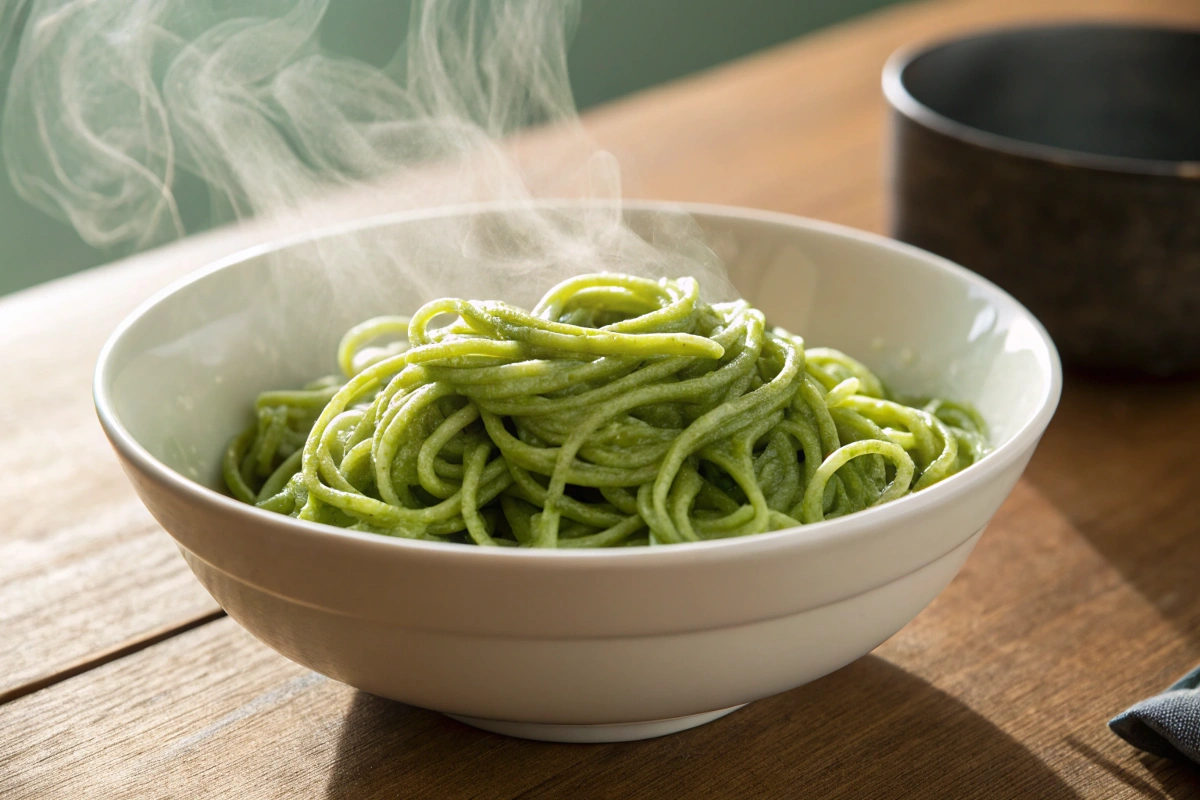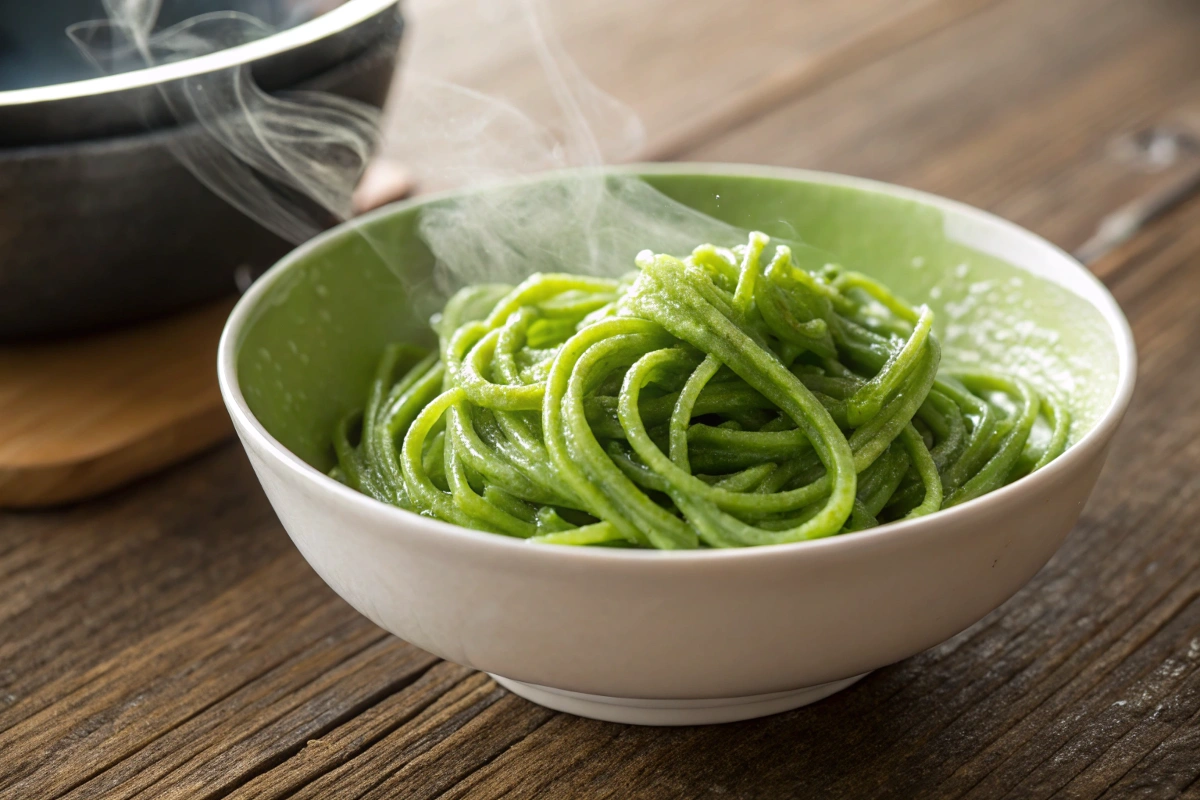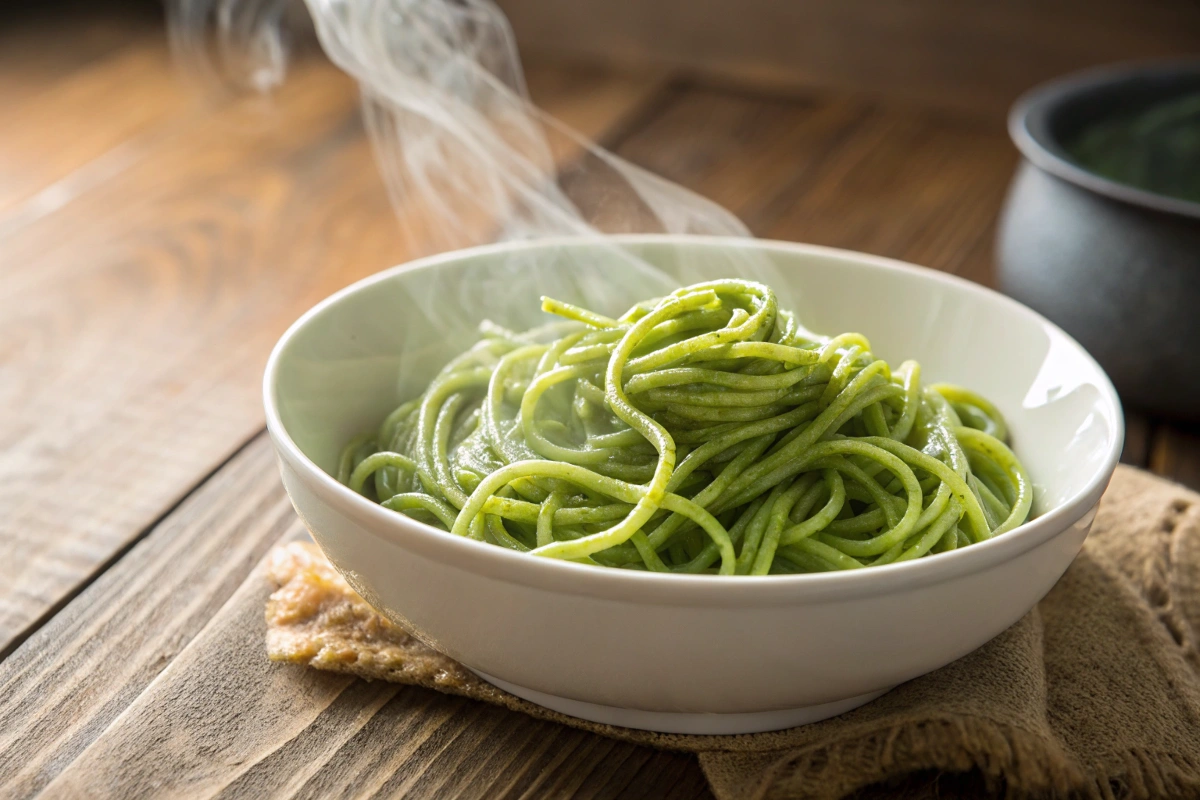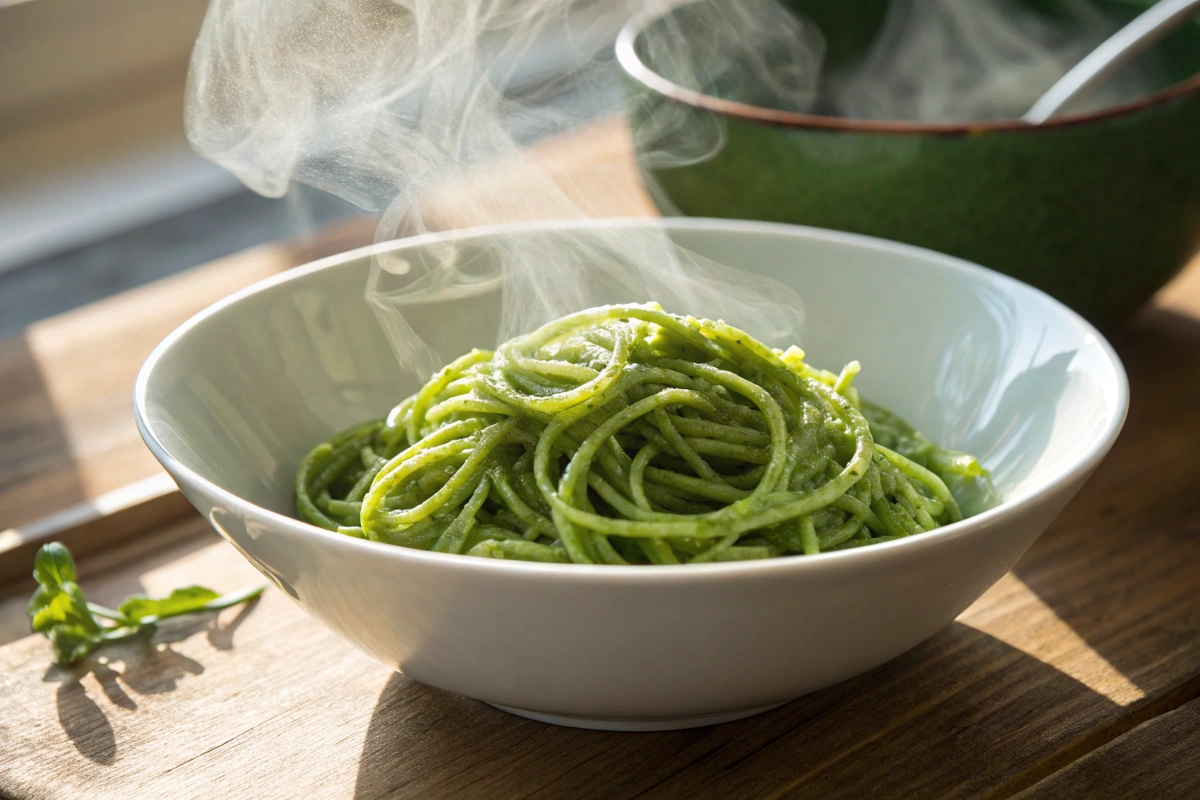How do you reheat green spaghetti?Reheating green spaghetti can be tricky. This article explains the best methods for keeping its flavor and texture.
The Best Methods to Reheat Green Spaghetti
Reheating leftover green spaghetti properly ensures a satisfying meal. However, the wrong approach can turn your dish into a mushy mess. Therefore, understanding different reheating methods is essential. Green spaghetti often includes pesto or spinach-based sauces. These sauces can separate or lose their vibrancy if not heated correctly. Consequently, you should choose your reheating method carefully.
Explore fun ideas in How Do You Make Green Spaghetti Sensory Play?.
Reheating Green Spaghetti on the Stovetop
The stovetop is a great option to reheat green spaghetti. Moreover, it allows for better control of the heat. Furthermore, this method is suitable for smaller portions. It is also a favored approach for those who prefer direct heat. This lets you monitor the process and adjust as needed. Also, it offers a level of precision that other methods might lack.
Step-by-step Guide for Stovetop Reheating
First, place your green spaghetti in a skillet or pot. Next, add a splash of water or olive oil. This helps prevent sticking and dryness. After that, use low to medium heat. Consequently, stir gently and frequently. For instance, this avoids burning and ensures even warming. Eventually, heat until thoroughly warm. Therefore, it usually takes about five to ten minutes. In conclusion, serve your reheated green spaghetti immediately. You want to ensure the dish is consistently hot throughout.
Tips for Success
-
Add a little extra sauce if needed. This keeps the spaghetti moist. Also, avoid overheating the sauce, as this can alter the flavor. Consider adding a tablespoon of sauce at a time.
-
Stir gently. This keeps the spaghetti from breaking apart. Additionally, do not let it stick to the pan. Gentle movements are key to maintaining the integrity of your meal.
-
Do not overcook. It will cause the spaghetti to get too soft. Hence, remove from heat once warmed. You should never overcook any pasta and reheating is no exception.
-
Moreover, using a non-stick pan helps prevent sticking. Likewise, this will make cleaning easier. You can also use a stainless steel pot, however, ensure it’s a heavy-bottom pan.
Reheating Green Spaghetti in the Microwave
The microwave is a quick way to reheat green spaghetti. However, it can also make spaghetti unevenly heated. Therefore, it requires careful attention. The convenience of the microwave makes it a popular choice. However, proper technique is essential.
Microwave Reheating Instructions
Firstly, place the green spaghetti in a microwave-safe dish. Secondly, add a bit of water or sauce. This keeps the spaghetti moist. Next, cover the dish with a microwave-safe lid or plastic wrap. Make sure to vent the lid to prevent steam buildup. Then, microwave in 1-minute intervals. Thus, stir between each interval. Also, check the temperature. Finally, heat until thoroughly warmed. This technique ensures the meal is heated evenly.
Avoiding Common Pitfalls
-
Do not overheat. This can cause the spaghetti to dry out or become mushy. If the dish is heated too much the texture is ruined.
-
Stirring frequently ensures even heating. Therefore, every minute is ideal for checking. Consistency is vital to avoid cold spots.
-
Microwave at medium power if needed. This helps prevent overcooking. Lower power settings can reduce the risk of overcooking.
-
Add a damp paper towel over the spaghetti. This keeps it from drying out. This helps to trap moisture and keeps the dish hydrated.
Reheating Green Spaghetti in the Oven
The oven is another viable option. It is best for large portions of green spaghetti. In addition, it helps maintain the spaghetti‘s texture. The oven also provides a more consistent and gentle heat. Therefore, this is a method that is great for even large batches of food.
Oven Reheating Process
First, preheat your oven to 350°F (175°C). Afterward, place the green spaghetti in an oven-safe dish. Following that, add a splash of water or a bit of extra sauce. This helps maintain moisture. Next, cover the dish tightly with foil. Bake for 15 to 20 minutes. Lastly, check to ensure it is thoroughly heated. You want to confirm that all parts of the dish are evenly heated.
Optimizing the Oven Method
-
Cover tightly with foil. This keeps the spaghetti from drying out. Foil helps retain moisture and prevents evaporation during baking.
-
Avoid overbaking. This can make the spaghetti too soft. Keep a close watch during the reheating period.
-
Stir the spaghetti halfway through. This promotes even heating. Stirring halfway will ensure that all parts of the dish are exposed to the heat.
-
Add a little extra sauce before baking. This enhances the flavor. It is a great way to refresh the dish after it’s been stored.
Maintaining the Flavor of Green Spaghetti
Green spaghetti‘s flavor is crucial to the experience. Therefore, you must take steps to maintain it during reheating. Moreover, improper reheating can make it bland. The flavor of the sauce is as important as the texture of the pasta.
The Importance of Sauce
The sauce is key to the flavor of green spaghetti. Furthermore, pesto and spinach-based sauces are sensitive to heat. Therefore, avoid overcooking them. In addition, adding a little extra fresh sauce is helpful. This will enhance the flavor. Also, a drizzle of olive oil can add moisture and taste. The sauce is what gives the dish its unique flavor, so care should be taken to retain this.
Handling Different Types of Sauces
-
For pesto sauces: Add fresh pesto after reheating for a brighter flavor. Fresh pesto is preferred as the flavor and color are more vibrant.
-
For spinach-based sauces: Stir in a bit of fresh spinach. This can boost the nutrients and color. A fresh addition of spinach will re-add freshness to the dish.
-
Avoid boiling your sauces. This will help preserve their flavor. Simmering is preferable as it’s a lower heat method that preserves flavors.
Seasoning After Reheating
Taste the green spaghetti after reheating. Reheating can sometimes dilute seasonings. Therefore, you may need to add salt and pepper. Also, a sprinkle of fresh herbs can enhance the flavor. Additionally, some grated cheese can add richness. Tasting is a step that must not be skipped so you know what adjustments to make.
Tips for Enhanced Flavor
-
Use sea salt or kosher salt. These salts can bring out the best flavors. Salt is a great enhancer, and sea salt or kosher salt are especially good choices.
-
Freshly ground pepper offers a much better taste. The flavor is much richer and more complex than pre-ground pepper.
-
Fresh basil or parsley can make a big difference. Fresh herbs always deliver better taste and aroma.
-
Grated Parmesan or Pecorino Romano is a great option. Cheese is a great topping for pasta, and these choices offer a flavorful richness.
Preventing Green Spaghetti From Drying Out
Dry green spaghetti is undesirable. Thus, keeping it moist during reheating is important. Moreover, several techniques can help with this. Moisture is vital to keep the dish from becoming dry.
Adding Moisture
Adding moisture is crucial to keeping green spaghetti moist. Therefore, use a splash of water or broth. Also, a little olive oil can prevent sticking. Furthermore, the sauce itself will add moisture. The addition of liquid can help keep the dish from getting dry.
Keeping it Moist
-
Add a tablespoon of water or broth. This works for stovetop and microwave. Always add water a little at a time.
-
Drizzle a bit of olive oil. This helps create a protective barrier. Olive oil helps to create a coating that will keep the dish moist and prevent sticking.
-
Add a small amount of extra sauce. This helps maintain the consistency. Extra sauce will add moisture and also flavor.
-
Cover while reheating. This traps steam to maintain moisture. This can be done with foil or a lid to trap the steam.
Reheating Techniques That Help
Different techniques work better for moisture retention. Therefore, be aware of the best approaches. For instance, low and slow reheating is helpful. Also, using steam in the microwave is effective. These methods can ensure the meal is heated without drying it out.
Choosing the Best Technique
-
Stovetop on low heat is gentle and retains moisture. Lower temperature cooking is gentler and prevents drying.
-
Microwaving with a damp paper towel can help. A damp paper towel provides much-needed moisture.
-
Oven reheating with foil is great for even moist heating. The foil works to trap moisture and keep the dish hydrated.
-
Avoid high heat. This dries the dish too quickly. High heat speeds up the cooking process but also dries out the meal.
Reheating Frozen Green Spaghetti
Freezing green spaghetti is an option to save leftovers. However, reheating from frozen needs special consideration. Therefore, you must use the right technique. Knowing how to correctly reheat frozen green spaghetti is a great way to avoid wasting leftovers.
Thawing Frozen Green Spaghetti
First, thawing green spaghetti before reheating is ideal. However, you can reheat directly from frozen. Either way, follow the steps closely. Thawing is always the preferred method as it is the safest way to reheat frozen food.
Thawing Methods
-
Thaw in the refrigerator overnight. This is the safest method. Thawing in the refrigerator is a safe way to ensure the meal thaws slowly and evenly.
-
Thaw in the microwave using the defrost setting. Check regularly to prevent cooking. Be careful when defrosting in the microwave, as it can start cooking the meal.
-
Reheat directly from frozen on the stovetop. Use low heat and add some liquid. If you choose not to thaw, use low heat and add liquid to prevent drying out.
-
Thawing helps ensure even reheating of the dish. This also makes the meal easier to handle as it’s not as fragile.
Reheating from Frozen
If you reheat frozen green spaghetti, do so gently. Start with low heat and add a bit of liquid. Also, you might need longer cooking time. Moreover, use patience to avoid burning the dish. Starting with low heat is vital to avoid burning the pasta.
Reheating Steps
-
Place the frozen green spaghetti in a pan or dish. Use an appropriate dish that is oven safe.
-
Add a splash of water, broth, or olive oil to prevent sticking. The addition of liquid is essential to prevent sticking.
-
Cover and reheat on low to medium heat. Make sure that the dish is covered.
-
Stir periodically to ensure even heating. Stir to make sure all parts are exposed to the heat.
-
Add more liquid if needed and continue to reheat. If it’s looking dry add liquid as necessary.
-
Reheat thoroughly until the center is hot. The entire meal must be reheated properly to the right temperature.
Tips for Best Results
-
Thawing in the fridge is the safest method. Thawing is always the safest method for reheating.
-
Low heat is essential when directly reheating from frozen. Low heat will prevent burning and keep the meal moist.
-
Adding liquid helps prevent drying out. The extra liquid is essential to keep the dish hydrated.
-
Patience is key. It will take longer to reheat frozen spaghetti. You want to be patient during the reheating process.
-
Do not overcook it to prevent a mushy texture. Avoid overcooking the pasta as it will impact the texture.
Can You Reheat Green Spaghetti More Than Once?
Reheating food multiple times can affect its quality. Therefore, understanding the risks is important. However, reheated green spaghetti is often fine to eat. Multiple reheats should be avoided, but understanding the risks is important.
Quality Degradation
Each time you reheat green spaghetti, the texture might change. Also, the flavor can diminish. Additionally, nutrients might reduce with repeated heating. Therefore, it’s best to reheat only once. Multiple reheats will impact the texture, flavor, and nutrients.
Effects of Multiple Reheating
-
The spaghetti can become too soft or mushy. Multiple reheats will almost certainly impact the pasta texture.
-
Sauces can lose their vibrancy and flavor. The sauce is delicate and can lose flavor with repeated reheating.
-
Nutritional value may decrease with each reheat. Nutrients can be lost during multiple reheating cycles.
-
The overall taste and texture are less pleasing. The flavor, texture, and aroma will be negatively impacted.
-
Bacterial growth can become a concern. Improper reheating can lead to bacteria growth.
Food Safety Considerations
Food safety is vital. Reheating green spaghetti multiple times can increase the risk of bacterial growth. Therefore, do it cautiously. In addition, follow food safety guidelines. It is important to be cautious about food safety when reheating food.
Food Safety Tips
-
Reheat leftovers only once if possible. Try to eat the leftovers in one serving.
-
Ensure the spaghetti reaches a safe internal temperature of 165°F (74°C). Always use a thermometer to ensure the internal temperature is at the correct level.
-
Store leftovers in the refrigerator promptly after the first meal. Leftovers should always be stored in a refrigerator promptly after they are cooked.
-
Consume reheated leftovers within 1-2 days. Eat the leftovers in a reasonable amount of time.
-
Avoid leaving reheated spaghetti at room temperature. Leaving food at room temperature promotes bacterial growth.
Best Practices
-
Reheat only what you will eat. This reduces food waste. Only reheat what you are going to consume.
-
Do not keep reheated spaghetti at room temperature. Do not allow reheated food to sit at room temperature.
-
Store leftovers promptly in the refrigerator. Leftovers must be stored in the fridge as soon as they are cooled.
-
Eat reheated leftovers within a few days. Do not leave the leftovers in the refrigerator for too long.
-
When in doubt, throw out leftovers. If you have any doubt about the food, it should be discarded.
Frequently Asked Questions (FAQs) About Reheating Green Spaghetti
Can you reheat green spaghetti?
Yes, you can reheat green spaghetti. However, do it properly to maintain its texture and flavor. Using the stovetop, microwave, or oven are the best methods.
How do you reheat spaghetti without it drying out?
Add a little water, broth, or olive oil. Also, cover it while reheating. Furthermore, this will trap moisture. Avoid high heat, as this can dry it out.
How do you reheat spaghetti so it doesn’t get mushy?
Reheat on low to medium heat. Stir gently and avoid overcooking. For instance, when using the microwave use intervals and stir. This will help prevent mushiness.
What’s the best way to reheat spaghetti?
The best way to reheat spaghetti is to use the stovetop on low heat. Also, you can use the oven or microwave with some liquid added. The choice depends on the portion size and your preference.
Conclusion
Reheating green spaghetti effectively is about maintaining both its flavor and texture. The stovetop, microwave, and oven offer different ways to reheat your dish, and each method requires careful attention to prevent drying out or overcooking. By adding a bit of moisture, stirring gently, and not overcooking the pasta you can have a delicious meal. Also, pay special attention to the sauce as this is a key component of the dish. When you want to reheat your leftover green spaghetti, choosing the right method and following the steps will make sure the meal tastes as good as the first time. Finally, always follow the proper food safety guidelines to ensure the meal is safe to eat.
Want to know if green spaghetti is a healthier option compared to traditional dishes? Read more in our article on Is Green Spaghetti Healthier?.




